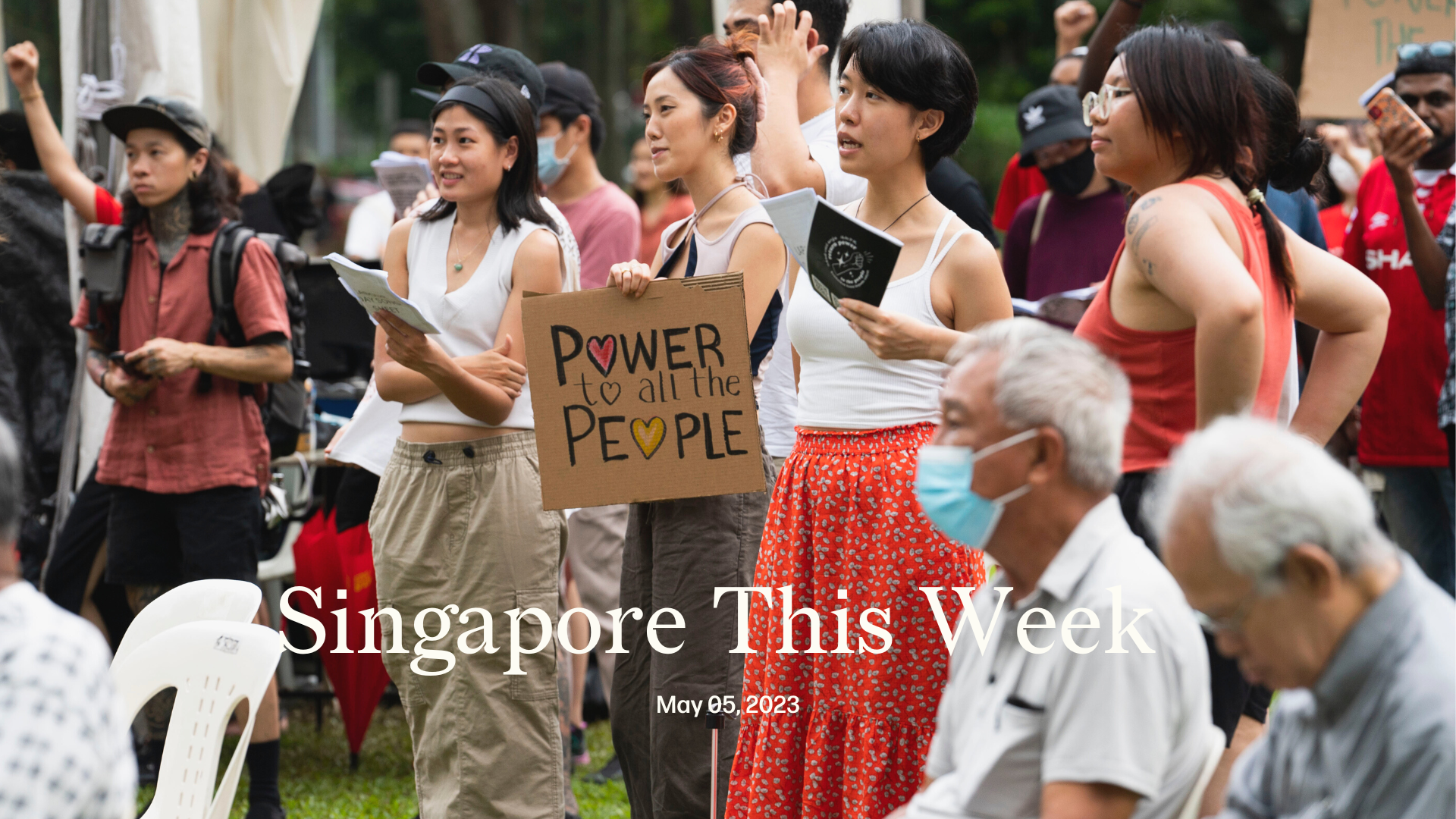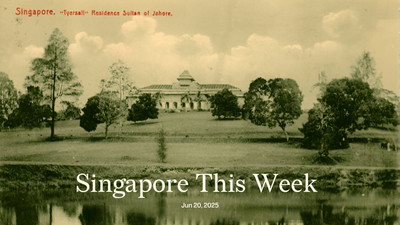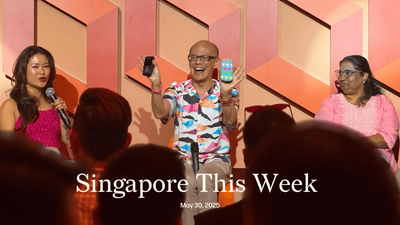Politics: Cooling measures
Housing prices will be the main electoral issue at the next general election (GE), due by 2025 (though there’s an outside chance it could be as early as this year). This is evident both from the disgruntlement among Singaporeans unable to buy or rent, and from the relentless front-page news in the mainstream media about how things aren’t that bad. In line with that, this past week the government announced a new round of property cooling measures, the third since December 2021. Most notably, foreigners will have to pay an additional buyer’s stamp duty of 60 percent. (PropertyGuru breaks it down for you with an online calculator.) There’s been scepticism in the market about whether these new measures will temper a red-hot market that brushed off the two prior rounds. Sellers have now urged buyers to quickly buy before further potential hikes. It comes in the same week that the Monetary Authority of Singapore suggested that the rental market may also cool once almost 40,000 new units come online soon. “Perhaps the message to Singapore citizens is that the government is listening and actively responding to gripes about housing affordability,” said Ku Swee Yong, real estate consultant, in a CNA commentary. Leading up to the GE, housing policies, initiatives and messaging may be less about actual market imperatives than political ones. Jom this week has published our fourth essay examining the housing issue. In “Class and ethnic segregation in Singapore: are we mixing it up?”, Shin Bin Tan, an assistant professor at the Lee Kuan Yew School of Public Policy, analyses whether our long-standing focus on ethnic integration has come at some cost to socioeconomic mixing.
Society: Six S$1,000 prizes in Maruah youth essay contest on vision for post-LKY Singapore
What does Mr Lee Kuan Yew mean to you and what is your vision for a post-Lee Kuan Yew Singapore? Respond to that in 2,000 words or less to win S$1,000. Singapore citizens born in or after 1990 are eligible to enter—that’s the year our first prime minister stepped down (only to become senior minister and puppeteer from behind). Three of the prizes are reserved for participants who have never enrolled in university before; while the remaining three are open to all. The contest is organised by Maruah, a Singapore human-rights NGO. Maruah, which means “dignity” in Malay, is one of two NGOs in Singapore to have been gazetted as a “political association”. (The other is ThinkCentre.) Under the new Foreign Interference (Countermeasures) Act (Fica), the entity is considered a “politically significant person”. All this severely affects its ability to raise funds, which makes the generous prize kitty all the more admirable. (The gazetting is also the reason the contest is restricted to citizens.) Instructions for submission are available at Maruah’s website and all entries must be received by July 15th this year. “Stop gazetting and crippling honest civil society groups” could win you some brownie points.
Society: Tattoos still taboo, why?
Since 2019, young people who want their tattoos removed have been able to do so at a subsidised rate through a scheme run by the National Skin Centre (NSC) with the Ministry of Education. As of December, 36 patients have completed the programme. The service began due to a “deep concern” for students who’ve been “wrongly advised to undergo tattooing,” which may be “detrimental” to their careers, said the chairman of NSC’s Health Fund. Patients usually need five to 10 treatment sessions, which cost between S$300 and S$500 each. The cumulative first S$1,200 is covered; they co-pay 10 percent on anything above. A 2019 YouGov study found that nearly two in five Singaporeans surveyed have a negative impression of people who’ve been inked. Almost half (47%) said that they’re less likely to hire someone with a tattoo, even if they’re qualified. But, it seems the sentiment for or against tattoos is fairly balanced and probably depends on the type of industry. Tattoos are centuries-old and of significance to many cultures. Last month, Apo Maria “Whang-Od” Oggay, a 106-year-old Filipina tattoo artist, became the oldest-ever cover model for Vogue, appearing in its Philippines edition. Many here may be wary of tattoos because they’ve long been associated with deviant behaviour, synonymous with gangs and secret societies. These days, though, they’ve transitioned from subculture to pop culture; “getting inked” is as mainstream as having your ears pierced or hair dyed the brightest trending colour. While the NSC scheme offers an affordable solution to youth who regret their tattoos, perhaps the real issue here is workplace stigma: marking candidates “less employable” not on their skin, but on their applications.
Society: More cat abuse than ever
In just the first three months of 2023, the Society for the Prevention of Cruelty to Animals (SPCA) investigated 11 cases of cat abuse. This includes high-profile cases, such as the young boy who threw a cat over the railing of a 22-storey HDB flat, and a teenage boy who performed obscene sexual acts on a cat and was arrested after CCTV footage of the incident went viral. Compared with 16 cases in the entire year of 2022, and 11 cases in 2021, SPCA is now seeing a “disproportionately high number” of cat abuse cases. This might not necessarily correlate to an increase in actual animal abusers—but rather just more vigilance, caution and reporting. But cat lovers are frustrated: “We’ve come to a point where there has to be real action—enough has been done to educate the public. These cases show that enforcement and deterrence are not effective enough.” Some are calling for more transparency of case statuses after reports are made, since there is allegedly “no clarity on what investigative steps [the authorities] are taking, and it is unclear if they are acting fast enough.” According to senior forensic psychologist June Fong, abusers harm animals potentially as a form of retaliation (against the animal or the owner), or as a way to relieve feelings of loneliness and anger. To be sure, those feelings need healthy outlets. Animal abuse is not one. So whatever the underlying reason, first-time offenders of animal cruelty can be fined up to S$15,000, jailed up to 18 months, or both. Next time you hear a cat meowing, check that it isn’t injured.
Society: Greater press freedom in Singapore?
On Wednesday, World Press Freedom Day, Reporters sans frontières (RSF, Reporters Without Borders) released the 2023 edition of its Press Freedom Index, which analyses the environment for journalists—political, economic, legislative, social and security—in 180 countries and territories around the world. At a global level, among other startling findings is the impact of the fake content industry. In 118 countries, “most of the Index questionnaire’s respondents reported that political actors in their countries were often or systematically involved in massive disinformation or propaganda campaigns,” RSF said. Singapore might be happy that over the past two years, it has jumped from 160 to 129 in the rankings. Why the rise? On the surface, Singapore’s economic indicator score has risen dramatically, even as some other categories, like political and legislative, have dropped. But for a more granular analysis of the Index itself, and the media environment in Singapore more generally, look out for our Jom essay in a week’s time, by our editor-in-chief, who for the past two years has been on RSF’s survey panel for Singapore.
Arts: Curtains on ‘the Durian’
Singapore’s first performing arts library is set to close at the end of June. library@esplanade will vacate “the Durian” and its collections and programmes will be moved to the Central Public Library on Victoria Street, a move that the National Library Board (NLB) says will benefit the multiple arts education institutions and arts practitioners based in the civic district. The Central Public Library is currently undergoing renovation work and is set to reopen some time this year. Millennials and beyond know firsthand that beloved libraries are always subject to being moved; the Stamford Library was closed and demolished in 2004 in favour of a commute-reducing road tunnel. Artists, students, and patrons of the arts who have fond memories of library@esplanade can look forward to the NLB’s closing programming for the space like the Intermission Party happening on June 30th. Details are forthcoming and will be posted on the library’s LearnXArts Facebook group.
Arts: Singapore HeritageFest 2023
Ever wondered about the art adorning the MRT station walls? Art Outreach Singapore will be conducting an Art in Transit tour this month. The tour takes commuters to four stations along the Northeast Line to learn more about work from artists like Chinese ink painter Chua Ek Kay and multidisciplinary artist Tan Swie Hian. This programme is just one of the many that make up the 2023 edition of the Singapore HeritageFest, this year’s focus is on Singapore’s rich sporting and transportation history. Other highlights include tours to train and bus depots and the Closing Weekend Sports Day held on the National Museum lawn where visitors can participate in games and watch showcases from martial arts experts. The HeritageFest runs all May, more information on programmes and registration can be found on the website.
Arts: SG photo survey
What better time to discuss pay transparency than on Labour Day? On May 1st, Lenne Chai and Charmaine Poh (disclosure: Jom’s co-founder) launched sgphotosurvey.com, an initiative born out of the circuit breaker in 2020. The survey addresses issues of financial security, access gaps and pay rationales. The majority of respondents were Singaporean Chinese, straight men who had a tertiary or higher education qualification, consistent with conventional social structures that enable success in Singapore. However, the survey also revealed the fragile state of a career in photography: more than half of respondents earned less than S$40,000 a year, and felt that full-time photography was not a viable option for their future. With 2022’s tectonic shift in AI (artificial intelligence), it wouldn't be surprising if more feel this way now.
History weekly by Faris Joraimi
“Power to the People”, held earlier this week, was a Labour Day rally held without oversight from the ruling People’s Action Party (PAP) and the National Trades Union Congress (NTUC). This is unusual for Singapore, where Labour Day largely has been an occasion for the PAP to assert its framework of tripartism: where workers (actually NTUC), Government and businesses build consensus. (NTUC is an umbrella group that, instead of acting as a separate power centre as do unions elsewhere, effectively works in lockstep with the ruling party’s pro-business agenda.) May 1st was officially designated a day for workers’ demonstrations in 1891 by the Second International, a league of socialist parties. In Singapore, open observances of Labour Day (or May Day) began in the 1930s involving hundreds of workers, sometimes clashing with police. The 1940 rally was so violent that the press called it a “riot”. True to form, British authorities back then associated labour agitation with rabble-rousing and communist subversion. But in 1946, a major Labour Day rally reflected how large and organised the workers’ movement in Singapore had become. During the war, Malayans were inspired by left-wing movements around the world, and awakened to their collective strength. Some 30,000 people attended the “disciplined and orderly” assembly at Jalan Besar Stadium. The Singapore Federation of Trade Unions (SFTU) was formed that year, whereas the Malayan Democratic Union (MDU), an anti-colonial party led by English-educated leftists, was founded the year before. Leaders from both organisations, the Pan-Malayan Labour Union and the Malayan Communist Party spoke at the rally. The speeches, emphasising peace and democracy, were tame compared to the more fiery rhetoric of the 1950s. But Singapore’s three biggest ethnic communities were represented. The crowd marched along Lavender Street into the city, through North Bridge Road to Middle Road, dispersing at the Labour Union building. Such massive Labour Day rallies continued to be commonplace in Singapore, until our workers’ movement was defanged with Barisan Sosialis’s destruction in the mid-1960s. Events like “Power to the People” urge us to recognise the inherent imbalance of tripartism. Under this framework, workers (least of all our huge migrant workforce) cannot protect their interests through independent organisation and collective bargaining. But as our fellow workers in the past showed, we can change this.
Tech: Low battery sucks
Did you know your vacuum cleaner maker is now making batteries? Dyson will be setting up a next-generation battery plant in Singapore (its global HQ) as part of a S$4.6bn global investment plan. This is not the first time Dyson has invested significantly in Singapore’s advanced manufacturing sector. Last year, Dyson announced that it would invest S$1.5bn in Singapore over the next four years. This new battery plant can be critical for Singapore’s foray into the renewables industry. After all, batteries underpin the future of electric transportation, with the battery currently comprising 30-50 percent of the vehicle cost. The new plant will also likely produce a cohort of “battery talent” that could support other battery companies, such as silicon anodes producer Volt14, battery recycling plant NEU Battery Materials, and electric bike producer Ion Mobility. In a time when many software companies are retrenching, it’s heartening to see hardware companies like Dyson expanding here. James Dyson himself last year received a Public Service Star, the “highest form of recognition for foreigners who have contributed to Singapore’s economic growth.” This follows years of criticism in the UK for his flip-flopping over residency and the UK’s relationship to Europe. In the late 90s, he wanted the UK to join the euro; then in 2014 was one of the most high-profile Brexiters. In 2019, he shifted his residency to Singapore—seemingly for tax purposes— and then in 2021, back to the UK. Critics joked that if one wanted “a moral vacuum…get a Dyson.” They can now joke about depleted moral batteries.
Tech: Pandemic hangover hits Oddle
Oddle, which offers e-commerce solutions to food providers and end-to-end services for restaurants, was once lauded for helping to save the F&B industry, one online order at a time. However, it’s now suffering from a post-pandemic hangover. Despite revenue growing nine times between March 2020 and March 2022, and despite its food delivery unit turning profitable in 2020, Oddle still struggles to achieve overall profitability. It seems like its cash runway has also shortened since raising a S$5m Pre-Series B round last year led by Altara Ventures. It has had to lay off 25 percent of its staff across Singapore, Hong Kong, Malaysia and Taiwan. Oddle is not the only one struggling to support its F&B partners. Last December, restaurant-booking platform Chope announced that it would be laying off 24 percent of its staff. Like Oddle, Chope benefited significantly from pandemic-era hunger for its services, and was able to onboard even Michelin-star restaurants onto its platform for food delivery services. Yet, as life returns to normal and Singaporeans return to in-person dining, businesses whose viability depend on lockdowns and remote work are suffering. Beyond restaurant tech companies, video conferencing software like Zoom and education technology companies like Byju are going through similar repercussions. To survive, they will have to successfully mutate.
If you enjoy Jom’s work, do get a paid subscription today to support independent journalism in Singapore.








